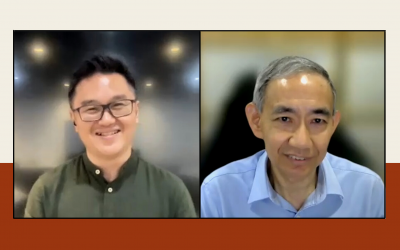Because of digital innovation, very few organizations are spared the titanic waves of business disruption. Initiating transformational changes within a compressed timeframe often mean cutting deep into an organization’s core competencies, finances, human resources and even core values. As a consequence, organizational structures are often reconfigured with many people being displaced (jobs and men are made redundant) and/or replaced (jobs taken over by new hires with the right competencies).
Transformational change is often contextual, and the toughest challenge is often not in developing the change strategy nor planning, but in execution especially in leading change through people. One key aspect often overlooked is the redefinition of leadership competencies in times of disruption. The demands for transformational leadership in a Volatile, Uncertain, Complex and Ambiguous (VUCA) world are inevitably different from a leader who operates in a relatively predictable albeit competitive environment.
Let’s cast our minds back into the distant past before we peep into the near future. At the start of the industrial revolution in the 20th century, Frederick W. Taylor published “The Principles of Scientific Management”. He purported that a successful manager is one who promotes efficiency through work methods, train and discipline the laisser-faire workforce. The world has since moved from industrial to informational and now to digital age. In today’s world, leaders need to:
- Have foresight based on perceptual acuity
- Be courageous to face the unknown
- Lead an organization that is unstable and ever-changing
- Engage diverse groups of people with minimal facetime
The leadership competencies that were relevant in the past have to evolve with emerging leadership challenges now in this digital world. Using Capelle’s STAR Performer framework, some of the key leadership competencies could be:

While competencies may change with the shift in the nature of job expected, performance standards and operating environment of a leader, timeless leadership attributes such as Integrity and Modelling the way that span across different societal eras remain.
The pertinent question to ask is: “Is there a need to conduct a review to update our leadership competencies in times of disruption?”
Once the leadership competencies are updated, organizations might want to embark on leadership development initiatives to help senior executives improve their performance and learning gaps through feedback, executive coaching and/or 360-degree feedback. In addition, the knowledge gained in the leadership competencies can help in the recruitment of younger talents to meet the leadership pipeline needs.
你可能也喜欢
A Leadership Challenge: The Exponential Rise of Innovative Business Models
Increasingly leaders are seeing the need to critically examine their current business models on how their business streams have to be recreated and sustained.
适应不同部门和文化的领导力
领导力最终体现在一个人如何选择在不同的环境中专业地和个人地实践他或她的信念。资深领导者Larry Choi先生通过他在不同部门和文化中与人沟通的真实经历分享了他的领导之旅。
Inspiring and Empowering the Next Generation to Lead Change
Everyone knows and understands the importance and relevance of raising the Next Generation especially in this turbulence of change, but what does it mean to inspire and empower them to lead change and how should it be done?




